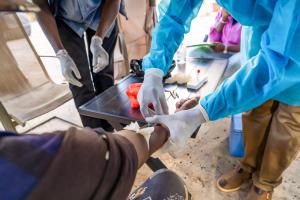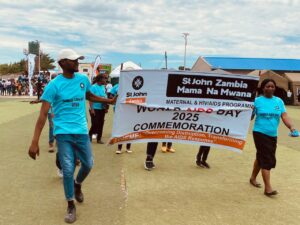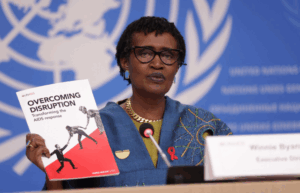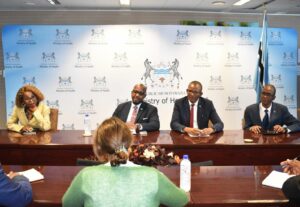About 77,000 women lose their lives in pregnancy and childbirth every year in the region, according to 2017 estimates by the UN Maternal Mortality Estimation Inter-Agency Group (MMEIG)
Women in East and Southern Africa still die during pregnancy and childbirth due to preventable causes, said Dr. Brian Chirombo, WHO Rwanda Representative, at a high-level meeting to track progress on ending preventable maternal and newborn deaths.
High-impact interventions are needed “to ensure the provision of quality maternal and newborn health care, from pre-pregnancy, antenatal, labour and delivery, as well as postpartum and neonatal periods,” he said.
Significant progress has been made in improving the survival and health of pregnant women and newborns in the East and Southern Africa region. For instance, the maternal mortality ratio (MMR, or number of maternal deaths per 100,000 live births) dropped by 49 per cent between 2000 and 2017. However, the MMR remains well above the global average, and the current pace of reduction is not enough to achieve the SDG targets by 2030.
About 77,000 women lose their lives in pregnancy and childbirth every year in the region, according to 2017 estimates by the UN Maternal Mortality Estimation Inter-Agency Group (MMEIG). For a 15-year-old girl, the probability of dying in her lifetime from maternal causes is 1 in 58, compared to 1 in 11,200 in Western Europe.
While the global neonatal mortality rate was 17 deaths per 1000, in sub-Saharan Africa the rate was 27 per 1000, according to the 2021 Trends in Child Mortality report. Of the 54 countries off track to meet the SDG target of less than 12 deaths per 1000 live births, 40 countries are in sub-Saharan Africa.
“The global health agenda has shifted from a focus on reducing mortality to ensuring that all women, newborns, children and adolescents not only survive, but thrive and realize their rights to the highest attainable standards of health and well-being,” Dr. Chirombo said.
This paradigm shift requires greater investments in integrated initiatives, together with quality integrated reproductive, maternal, newborn, child and adolescent health (RMNCAH) interventions that focus on health promotion, disease prevention and treatment.
Tracking progress
While the global neonatal mortality rate was 17 deaths per 1000, in sub-Saharan Africa the rate was 27 per 1000, according to the 2021 Trends in Child Mortality report
To support the implementation of evidence-based maternal and newborn health guidelines, the East and Southern Africa UN interagency team (UNICEF/WHO/UNFPA) organized a regional meeting in Kigali, Rwanda this month.
Led by the H6 Eastern and Southern Africa Coordination Team (mainly UNICEF, WHO and UNFPA), the aim of the meeting was to track the progress of Every Newborn Action Plan (ENAP) and Ending Preventable Maternal Mortality (EPMM) Frameworks.
Many countries have developed policies on RMNCAH and implemented them at every level of the health system, in alignment with the Global Strategy for Women’s, Children’s and Adolescent’s Health 2016-2030 and setting targets towards achieving the SDGs.
The global ENAP, launched in 2014, provides a road map of strategic actions for ending preventable newborn deaths and stillbirths, and contributing to a reduction in complications during pregnancy and childbirth.
Countries shared their successful practices and challenges on universal health coverage, emergency obstetric care, midwifery and newborn health, as they work to accelerate progress on achieving the SDG targets. Opportunities were identified to scale up high-impact interventions in primary health care, from south-south cooperation to harnessing the power of innovation. This included using new digital technologies, such as portable ultrasound, e-learning and mentoring platforms, safe delivery apps and clinical decision support platforms.
Improving midwifery in East and Southern Africa
Midwives are key to reducing maternal and neonatal deaths, and improving their health and wellbeing. While the region has shown improvements in higher education for midwives and their career pathway, a shortage in the number of midwives remains. In addition, a few countries are falling behind in institutionalizing continuous professional development and re-licensing of midwives.
These critical points were discussed during a side meeting held by UNFPA on the State of the World’s Midwifery 2021 report for East and Southern Africa, attended by representatives of ministries of health and midwifery associations, and UNFPA midwifery experts.
Country experiences were shared on developing an enabling environment and equipping midwives with the skills and knowledge they need to ensure healthy pregnancies and safe births. Action plans were developed for improving the state of midwifery in their respective countries, where UNFPA will play a key role in providing technical support to implement these plans over the next two years. The plans included increasing the number of qualified midwives equipped with the knowledge and skills they need to help reduce maternal deaths and accelerate progress on achieving the SDGs.
Distributed by APO Group on behalf of UNFPA – East and Southern Africa.







OTHER ARTICLES
Rift Valley Fever in Senegal: On the Frontline to Protect Communities
Zambia : commemorates world AIDS day
UNAIDS releases its 2025 World AIDS Day report: Overcoming disruption, transforming the AIDS response